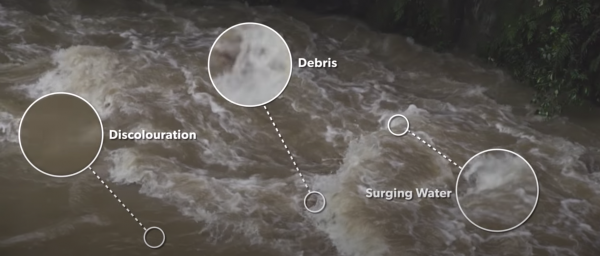Do you really need to cross?
Stop and take your pack off, drink some water, eat a snack, think about what you see and have a chat with your group. These are all basic steps everyone should take before deciding if a river is safe to attempt a crossing.
Our Operations Manager and river safety expert Nathan Watson says it’s important that everyone in a tramping party feels comfortable with a river crossing.
“The most important element of a river crossing is the very first decision you make – should you attempt to cross, or not – making this decision as a group is essential,” says Watson.
It is almost never the case that trampers are forced into a position where it’s safer to risk a river crossing than to stay put.
“It’s one thing to get into a river that’s running at a low flow and make a mistake or have a bad technique, but it’s another thing to get into a flooded or dangerous river in the first place.”
Watson has pulled together his top tips along with MSC resources to help beginners, intermediate and even experienced trampers understand a river crossing.
The three main steps of a river crossing are:
- Do you need to cross?
- If yes, where?
- If yes, how?
There are some simple things you can look for when trying to determine if a river is safe to cross.
Find a good viewing spot on the riverbank and look for:
Speed – is the river flowing faster than your walking pace? If yes, that’s a sign the river is probably unsafe
Water colour – is the water discoloured, brown, dirty, or murky? If yes, then it is very likely the river is ‘flooded’, meaning a higher than normal water flow, and another sign it’s not a safe crossing.
Items in the river - Can you see any debris, like tree branches, being carried down in the water? If you do, stay out, this is not a safe river to attempt to cross.
The sound of moving rocks – Can you hear rocks being moved by the water? If yes, stay out, this is not a safe river to attempt to cross.

Signs of an unsafe river
If you’re not experienced in river crossings or identifying unsafe rivers, then try to avoid crossing rivers by selecting tracks that use bridges.
Always be prepared to change your plans to avoid crossing an unsafe river.
It is much safer to seek shelter and wait for the river level to drop, or turn around and head back the way you came.
If you and your group determine that it is safe to attempt a crossing, make sure you use the ‘mutual support technique’. This is the safest way to cross with other people. Watch our short video for all the details on how this technique works.
Operations Manager Nathan Watson’s go to checklist before any river crossing:
The ‘BREEDS’ self-checklist
- B – Bed surface (what’s under your feet, or in the river, that could make the crossing difficult?)
- R – Run out (look downstream, if something went wrong what is below you that could cause problems?)
- E – Entry point (where can you easily access a suitable crossing point?)
- E – Exit point (where can you easily and safely, exit the river?)
- D – Depth (how deep will the water be on the shortest person?)
- S – Speed (Is the water moving faster than walking pace?)
- Learn more about River Safety and try out our E-Learning Tool
- Read a story about a group of trampers who encountered a difficult river